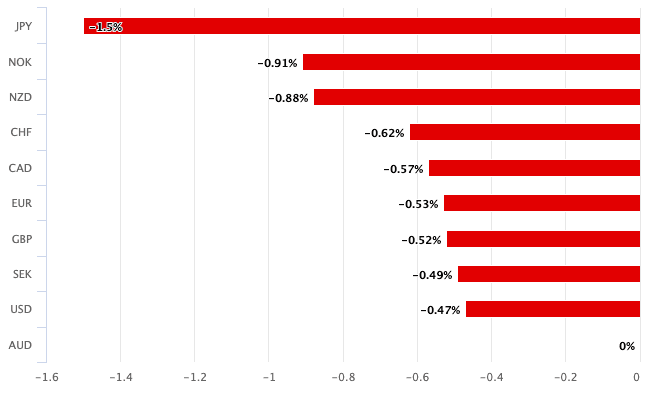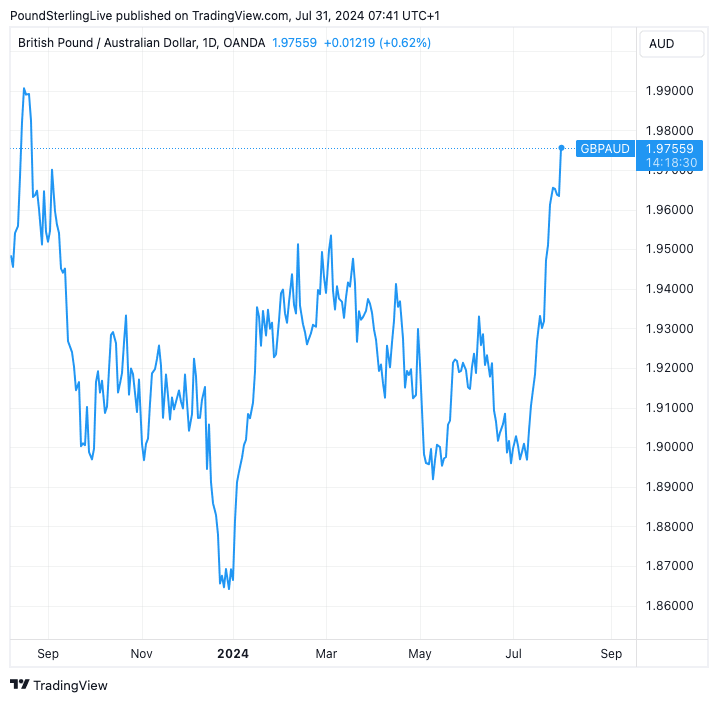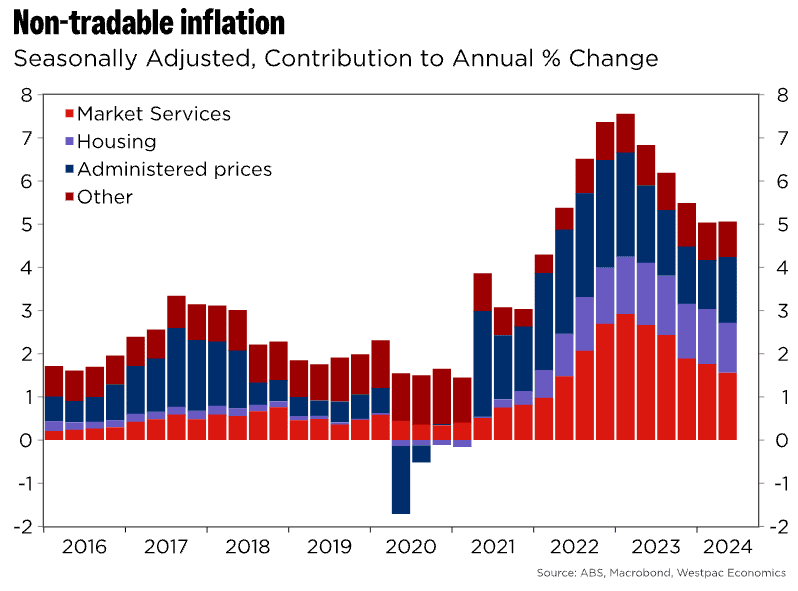Australian Dollar: GBP/AUD Hits Fresh Highs After Core Inflation Slowdown Casts Doubt on Another RBA Hike
- Written by: Gary Howes
-

Image © Adobe Images
The Australian Dollar is lower against its major peers after Australia's quarterly inflation figures eased pressure on the Reserve Bank of Australia (RBA) to raise interest rates again.
The Pound to Australian Dollar exchange rate (GBP/AUD) rose to its highest level in 11 months at 1.9810 after the ABS said headline CPI rose in line with expectations by 1.0% quarter-on-quarter in the second quarter.
But trimmed mean CPI rose less than expected by 0.8% q/q (expected: 1.0%). This is a core measure of domestic inflation that the RBA pays close attention to, as it thinks it is particularly sensitive to interest rate policy.
As a result of the undershoot in this core reading, the market unwound bets for interest rate hikes by the RBA and is now pricing about a 70% chance of a 25bp rate cut by December.

Above: AUD performance on July 31.
Three‑year Australian government bond yield fell almost 24bp to 3.74%, and the AUD was lower across the board.
"The RBA Board will welcome today’s outcomes given the risk sat with stronger prints on both the headline and underlying measures," says Gareth Aird, an economist at Commonwealth Bank of Australia.
CBA expects the RBA to leave the cash rate on hold at the August Board meeting next week and retain their call for an RBA easing cycle to commence in November 2024.
Above: GBP/AUD at daily intervals. Track GBP/NZD with your custom alerts; find out more here
Confidence that the RBA can cut rates by year-end is growing, but there can be no sugarcoating that Australia's inflation remains stubborn and persistent. These data confirm that inflationary pressures remain centred on services, which gained 1.0% in the quarter to be up 4.5% y/y (up from 4.3% in Q1).
The main drivers of headline inflation are rents, electricity and holidays. The ABS noted a 8.1% rise in international holiday travel due to an increase in demand for holiday travel to Europe at the start of the peak tourist season. Fruit and vegetables also made a solid contribution.
Above: The breadth of inflation remains broad and underpins Australia's stubborn inflation problem. Image courtesy of Westpac.
Despite Australia's robust inflation dynamics, domestic economists remain adamant that prices are still heading in the right direction and that there is no need for the RBA to raise interest rates again.
"This won’t be enough to convince the RBA that it cannot return inflation to target by 2026 under current policy settings, particularly given the ongoing slowdown in the broader economy and labour market," says Catherine Birch, Senior Economist at ANZ.
Australia's big banks are of the view the Bank won't hike again. And, this is likely the correct expectation given the RBA itself has long proven to be a reluctant hiker, raising rates less than peer central banks, despite the country's inflation levels.
Westpac's Chief Economist, Luci Ellis, notes, "the inflation decline is on track, RBA can soon relax."
New governor Michelle Bullock is a crowd-pleaser and will be loathe to push through another unpopular hike.
If rate hike expectations decline further from here, the Australian Dollar can come under more pressure.
"AUD-USD and NZD-USD have sold off by 3.5% and 3.8%, respectively, in the past two weeks, a 5th percentile move since the year 2000 for both. The direction of travel does not surprise us. We turned bearish on both currencies recently," says Lenny Jin, Global FX Strategist at HSBC.







